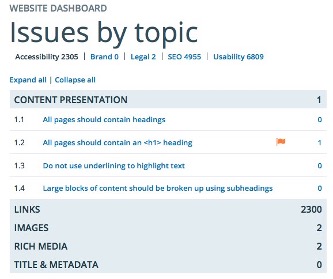Corporate judo is finding ways to leverage your companies bureaucracy and rules to your advantage.
Corporate judo, like the sport of judo, emphasizes techniques that turn an opponent\’s force to one’s advantage rather than oppose it directly. This involves understanding and utilizing a company’s bureaucracy and rules to your advantage.
While trying to implement force multipliers, I inadvertently became a black belt in corporate judo by integrating Search requirements into the organization\’s myriad guidelines and rules. When I was at IBM, we had binders of guidelines and an intranet site that documented rules for every pixel, element, and HTML code, with examples and various parameters for everything related to IBM.com. The screen capture below, dated 22 years ago, displays the original title tag standards along with examples and links to more refined guidelines.

I learned about these rules when the hundreds of tickets I entered to correct the audit items were all rejected. A few days later, I met the person who had denied them – the Web Compliance Manager, who came to my desk and introduced the standards. She explained that I needed to review and adjust my tickets within these guidelines. I asked what to do if the policies were too restrictive or negatively impacted what was required for me to do my job.
She explained that for any changes I wanted, I needed to document the issue and then submit details of the recommended change, including the reason for the change, the updated language, and an agreement with the shift from the key element owner. Once that was ready, I could then present it to the review committee for evaluation.
This was groundbreaking in terms of process improvement and potentially eliminating the need for hundreds of routine fixes. The simple fact is that if I could change the rules that enabled the problems, it would change not only how things were implemented but also the rules that mandated them. The web governance at the ticket and site level meant that I could ensure search compliance.
I spent the next week understanding the rules that rejected my tickets. Then, I methodically read every guideline and requirement, looking for any search implications. Ultimately, most of my requests for changes and deviations were accepted because they did not negatively impact the current standard in any way. The remaining 15 percent required back-and-forth discussions with stakeholders to achieve a mutually beneficial outcome. This game changer was significant, allowing the team to scale web effectiveness with minimal effort.
Integrate with Enforced Rules
Similar to what I did at IBM and the web team, we achieved this at P&G by integrating search requirements into their brand and creative guides. While many agencies ignored SEO guides, compliance with P&G’s brand and web style guides was non-negotiable.

The best part of integrating with the creative guides was that existing procurement contract requirements forced the creative agencies to comply. As many often sold SEO as an add-on service, they usually left out key optimization elements. Enforcing SEO requirements in the creative standards required those agencies to fix the defects without any incremental revenue. This was a key way we could benefit from key SEO best practices at launch.
Avoid creating seperate SEO rules. Integrated them into those that are already enforced!
Identify if the company has any automated review or web compliance validation tools. While working with Hewlett Packard, I was tasked with creating or sourcing an SEO diagnostic platform. It’s not your typical SEO crawling tool but rather one that integrates with the CMS via the user’s browser at the point of content creation. The goal was to eliminate or reduce SEO issues before the page goes live. None existed, but legal and compliance used a monitoring system named Active Standards to validate brand, legal, and accessibility requirements. I worked with this team and the vendor to integrate our SEO requirements. This was connected to the CMS, so every page was thoroughly tested before going live.
The senior VP of digital already strictly enforced brand and accessibility compliance rules. She mandated that any issue flagged as Level 1 could not be launched until it was corrected; the CMS would not allow publication until the issue was corrected. Levels 2 to 5 had variable correction windows, ranging from 24 hours to 30 days, depending on the severity. More than half of the SEO elements were level 1, with the remaining in 2 and 3, ensuring they were corrected before search engines had much chance to index them.
I successfully integrated 70% of the SEO scoring criteria into existing team responsibilities. In the screen capture below, we integrated title tags, headings, and H1 testing into accessibility. Title tag rules were in the brand guidelines and others in the usability guidelines. Those that were truly SEO were categorized as SEO. Integrating into the point of creation at the correct role level helped to eliminate the need for many after-the-fact SEO actions.

Centers of Excellence
One of the most effective ways to manage the communication and collaboration required for this level of integration into rules and regulations is to establish and actively participate in a Center of Excellence, which brings together all stakeholders from the various web teams. This includes template teams, server teams, and content teams. Again, we’re looking at, going back to Epiphany 1, force multipliers. How can we integrate this into a work stream that is already addressing the issue or could help resolve it as part of its existing activities and then prevent future reversals by adapting the required standards?
Many companies have adopted centers of excellence, not just for search but for various other aspects related to web effectiveness. The goal for all is process optimization, if you reframe this problem, you know, we don’t optimize for Google; we optimize for web effectiveness. Yes, doing these things can benefit Google or search, but in many cases, they will improve a process in multiple dimensions.
That’s why, if we think about it as optimizing for web effectiveness or changing for web effectiveness, you’re likely to get better adoption and usage from people than you would if it were just a pure plaything for Google. Another big one in this, in theory, should be a separate epiphany.
Why do they do what they do?
We have a specific epiphany for this one, “Understanding the Why,” but it’s worth mentioning here as we discuss corporate processes. No employee necessarily acts in a way that negatively impacts the business, so it is crucial to understand why they are doing what they do. I have captured some of the reasons in this post on why SEO is not more integrated.
Recommendations
My recommendation is to identify your company’s weak spots and any rules that prevent you from doing what you need to do and then figure out how to change or leverage them. If you don’t have them, create them. Gather a team and explain why they are needed, how to measure them, and what is required for enforcement. It does not have to be anything fancy; a simple checklist of the requirements for pages provided to developers by a manager may be enough to encourage compliance.
